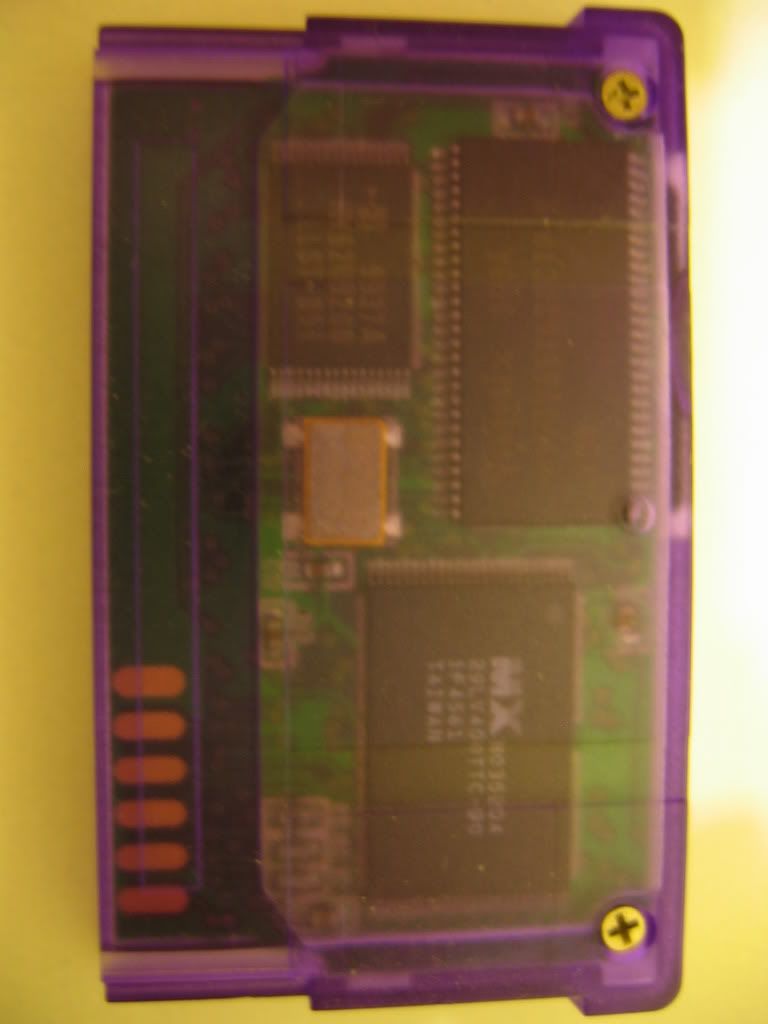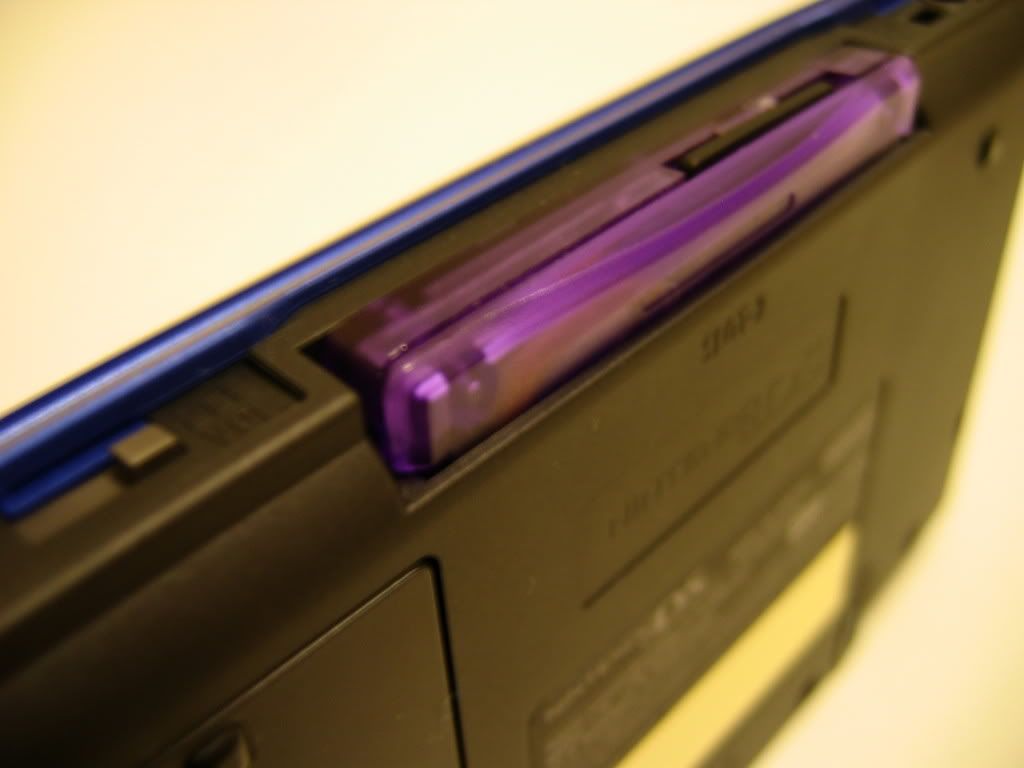| Supercard MiniSD Review - DS Database |
- Introduction - The Supercard MiniSD was release a little before the DS Lite. At the time, it was one of the greatest slot-2, flush-fitting flash cards on the market using the latest technology, the MiniSD memory card. At the time of release, the only competitors with the Supercard MiniSD were the M3 MiniSD and the EZ Flash 4. Of the three, the Supercard MiniSD was the obvious choice. The M3 MiniSD still stuck out from the NDS a little, and the price tag was quite hefty. The EZ Flash 4 was produced by a company that was not all that popular in the scene, despite having a good record, they were not well known. - Design - When I received the Supercard MiniSD, I was not all that impressed. It was clear that they did not spend much time at all on the box, it was evident because of the terrible directions and the horrific grammar they had used. Inside the box was a tray holding the Supercard MiniSD. There was nothing else, no CD, no bonus goodies, not even a manual.
However, the Supercard MiniSD did look good. Despite the fact it was purple, you could immediately tell that this wasn’t just any cheap flash card. The Supercard MiniSD was a perfect fit for any GBA slot. The clear purple plastic used looks great and durable, and the cool thing is, it’s clear, so you can see all the chips and bits of solder used inside the card. The other thing to comment on is the spring-loaded MiniSD reader. It was a great way to insert and remove the MiniSD. And once again this card stresses on quality and durability, the springs, the casing, even the sticker is in mint condition after half a year of use.
- Software - It was quite annoying to set the card up at first. There was no included disk, nor was there a manual. After trying to put clean roms inside of the MiniSD, I decided to check out the website on the box. Thankfully, it gave me better instructions and a download. The software itself was quite simple to use. There were quite a few options, but many of them were not necessary at all. If you just wanted the rom to work, you just click add and then out, nothing more.
If you wanted to check out the options, the GBA side has quite a few, such as soft reset, cheats and adding an entire text into the game. I found the text to be quite useful, at any point of the game, you could press L + R + B + START to open up your text file, this could be a guide, a list of things you still need to do or even a book so that you can tell your friends that you were studying on your Gameboy Advance. The cheat system is quite limited, there is a number of stored cheat files, but that is about all you have. There are very few cheats, and they aren’t relatively useful in most games either. On the NDS side, most of the options are for better overall support or emulation. Although, to be fair, there are some other options as well: Saver Patch – Allows the game to be saved on either the original cartridge on your DS’s slot-1, or your Supercard. I must say, despite the unstylish look of the patcher, it does show how great the Supercard is. It has a huge number of options for people who like to meddle with them, and also, it is simple enough that you can click two buttons and be set. - Use - On a Gameboy Advance the Supercard MiniSD will bring you to a menu. That is it, you choose your game and you are set. On a Nintendo DS however, you will need a passme, a nopass or a flashme’d DS to run the Supercard MiniSD. At that point you will have a menu on the top screen and the Supercard logo on the bottom screen. Once again the menu is simply a menu, it does not look great, nor does it have a lot of options, it is just there to bring you to your game.
- Functionality -
The Supercard series is renowned for their excellent support in the NDS department, and their terrible GBA support. On the NDS side of the card, every roms runs. There is not a single rom that will not work on the Supercard MiniSD, the support is literally 100%. However, there are a few slowdowns. These games include both Castlevania games and both Tony Hawk games. It is possible to avoid some slowdown with a faster MiniSD, however, most average MiniSD cards will run with slowdown, even the faster ones do not rectify this problem completely. On the GBA side, the Supercard MiniSD fares decently. The card runs most major games, and most GBA games. However, there is a ridiculously annoying save system that requires you to press a combo every time you save. As a bonus however, there is real time save for Gameboy Advance roms. The Supercard MiniSD does not have a built-in Real Time Clock, therefore Pokémon games will not run correctly with the day and night cycle. When talking about homebrew, Supercard is the king, almost all homebrew are designed specifically to work with Supercard because of its immense popularity. And because of that, there isn’t a single homebrew application that does not work with Supercard MiniSD.
- Conclusion - Overall, the Supercard MiniSD is a great card. It can be found for relatively cheap, it fits both the DS and the DS Lite as well as all Gameboy Advance models. It runs all NDS games, most GBA games and all homebrew applications. Basically if you are willing to flash your DS, settle with a bit of lag and limited GBA, then the Supercard MiniSD is definitely your pick.
- Score - Design – 3/5 Overall – 34.5/40
|









